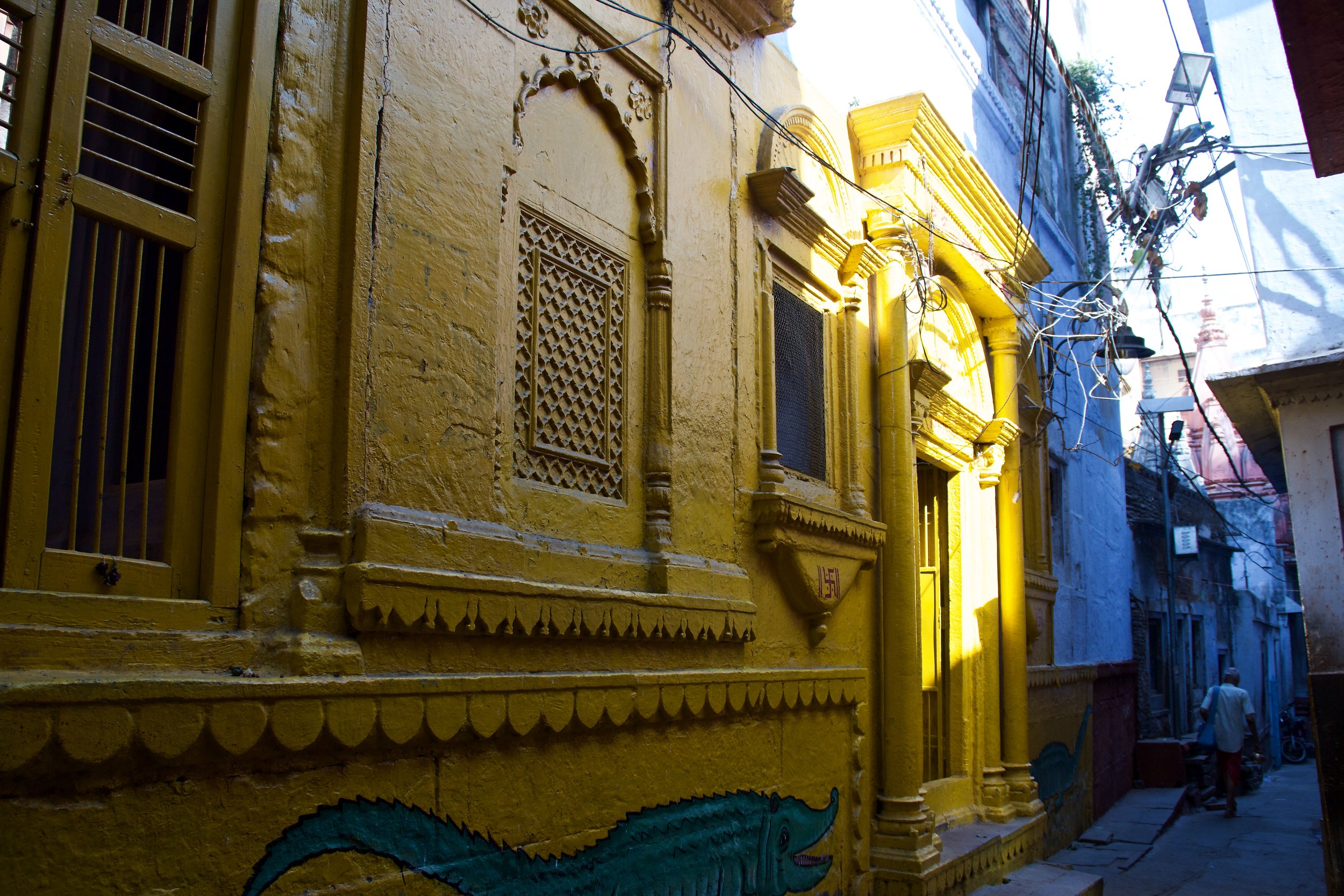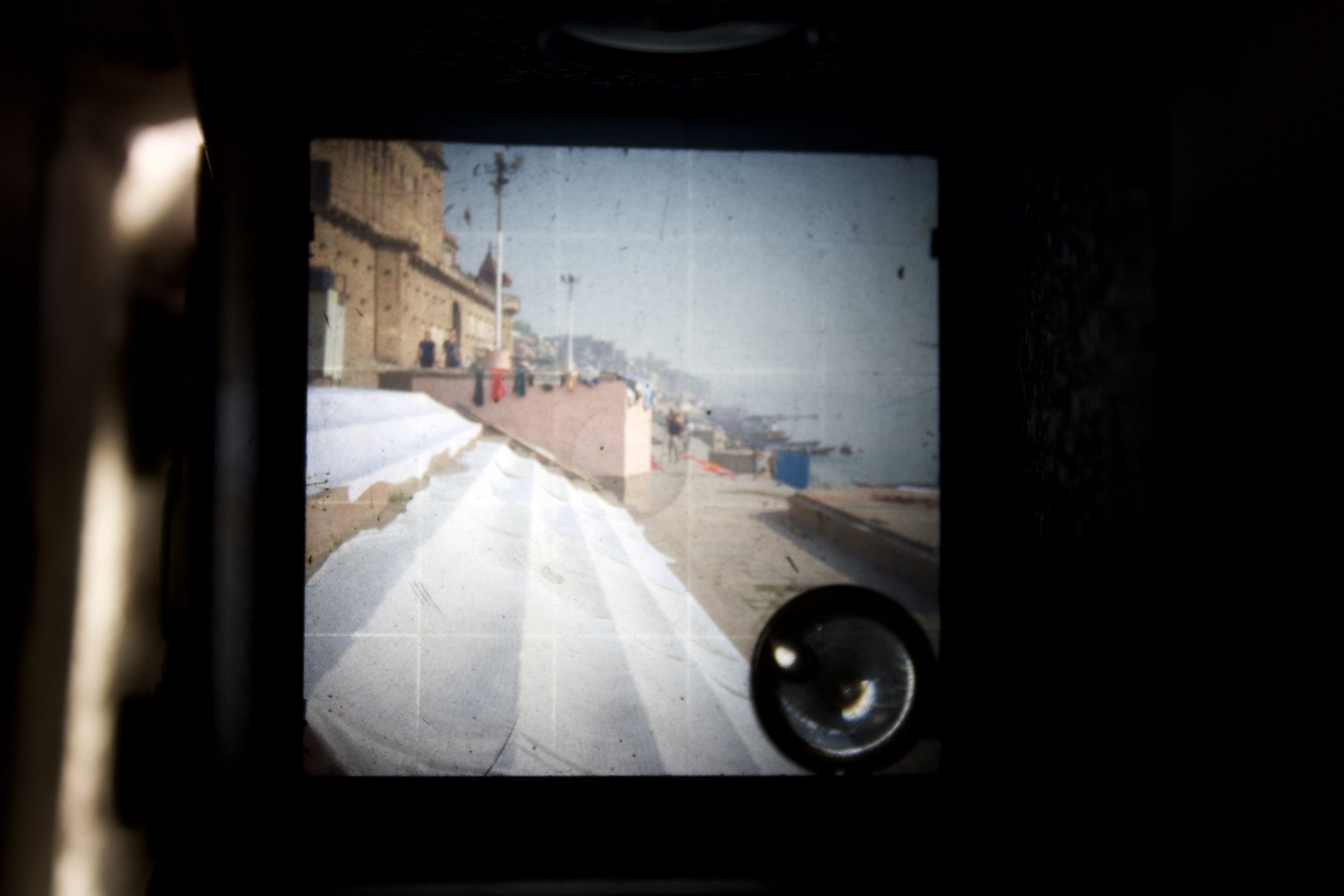As I sit here with the paste and pigment of the Shiva tilak (ceremonial markings on forehead in the style of Shiva’s) drying on my forehead I am looking back over the 8 days and 9 temples, dedicated to the Goddess Durga, visited throughout Varanasi beginning on the first day of the Hindu New Year. Temples are the most common thing in Varanasi besides paan stalls and yet they always hold some mystique for me. They are in open spaces and crammed into alley ways or more correctly buildings and lanes are crammed up to them, so finding these places can be a mission but this all helps locate yourself when trying to figure out this city. As places of worship and pilgrimage I am drawn to them but as places of rules and protocols I am guarded.
Spiritual aspect aside, these places are nerve racking places for upholding customs and the right way of doing things. Shoes are always removed well ahead of entering the temple gates, so strangely, street grime is carried through these sacred spaces. Raised door ways are the sacred threshold that sustain the whole structure of a house so are always touched and a blessing is given before you step over them, mindful of not stepping on them which is difficult when you’re being cajoled by parishioners eager to stand in the presence of one of the nine forms the Goddess takes.
I approached one temple only to read the sign stating, ‘If gentlemen are not of the Hindu religion please do not enter the temple’ I questioned our guide and he just said that was for a respect thing. Trying to tell every tourist what to do is a logistical nightmare so it’s easier just to make one sign that stops the problem of overenthusiastic backpackers walking in, shoes and all, to photograph the cool statues inside the temples.
After that my forehead is smeared with clay and vermilion in the first of what would be many blessings over the week. Once closer to the temple with coconut and hibiscus wreath in hand I am told to ring the bell above my head three times as those before and after me will do. This is supposed to make the auspicious sound ‘Om’ which is the name for Lord and therefore is pleasing to whatever god it is whose temple you are at. I find it interesting that bells have been rung all over the world for so long in so many religions and sects.
While waiting in line it is a privilege to watch all the different coloured saree worn by the women who assemble en masse. These colours manage not to clash in India by sheer force of will by their wearers and the constantly changing complimentary colours of the dark red, bright yellow or pale blue of the temple interiors. Once closer to the form of the goddess the pushing and shoving becomes more energetic and shouts of different priests directing the flow of people becomes more apparent.
I hand a man behind the railings my items including coconut and small offering of money. The money like koha goes onto a pile and the coconut is smashed violently against a stone or the side of a wall. Breaking a coconut symbolises smashing your ego and humbling yourself before God. The hard shell of ignorance and ego is smashed which gives way to inner purity and knowledge symbolized by the white of the coconut. I think the point of this ritual is to repeat it over and over again until it lodges itself deep within you and appears on the surface.
I am handed back the coconut to take home and consume, blessed by the goddess.
Once that is done I will often stand off to the side waiting for the others in the group, each participating in different ways. On one occasion I was called over by the armed police who lazily patrol the temples on these special occasions. They were intrigued by my presence and tattoos. On another evening some offerings of cloth caught fire as they were above the candles lit in prayer and quickly engulfed the side of the temple, a few men began to panic, a hose was quickly produced and the fire put out, no evacuation or cordon, everything just went back to normal though with a now blackened temple.
You will not see any photographs from inside the temples as this is prohibited and not everything needs to be photographed. I like this place for these strict adherences to religious practice and lack of Instagram worthy hashtags attached there is some digital silence here where technology is not required. There was however a beautiful cursive hand-painted sign which said ‘Photography is Prohibited,’ painted in English directly onto the temple wall above a shrine that I would have loved to show you.
After taking it all in I notice that the people who flow from all over the city all seem to circumnavigate these holy sites going around them, touching and pausing at certain places to pray and perform rituals. Our guide Ajay tells me this is because Hindus believe in doing things in their entirety. To fully walk around the temple grounds you to these places. You see it and feel it from 360 degrees. This is an action of contemplation and devotion as well as a thorough act of completion and grounding. And I think I get it, for the past three years or longer I have been going to sacred places of memory and loss as well as spiritual places of reverence and walking around them, not fully understanding why but knowing it is important.
Now it makes sense.
Small vermilion shrine agains the palest blue walls, Manikarnika Kund



